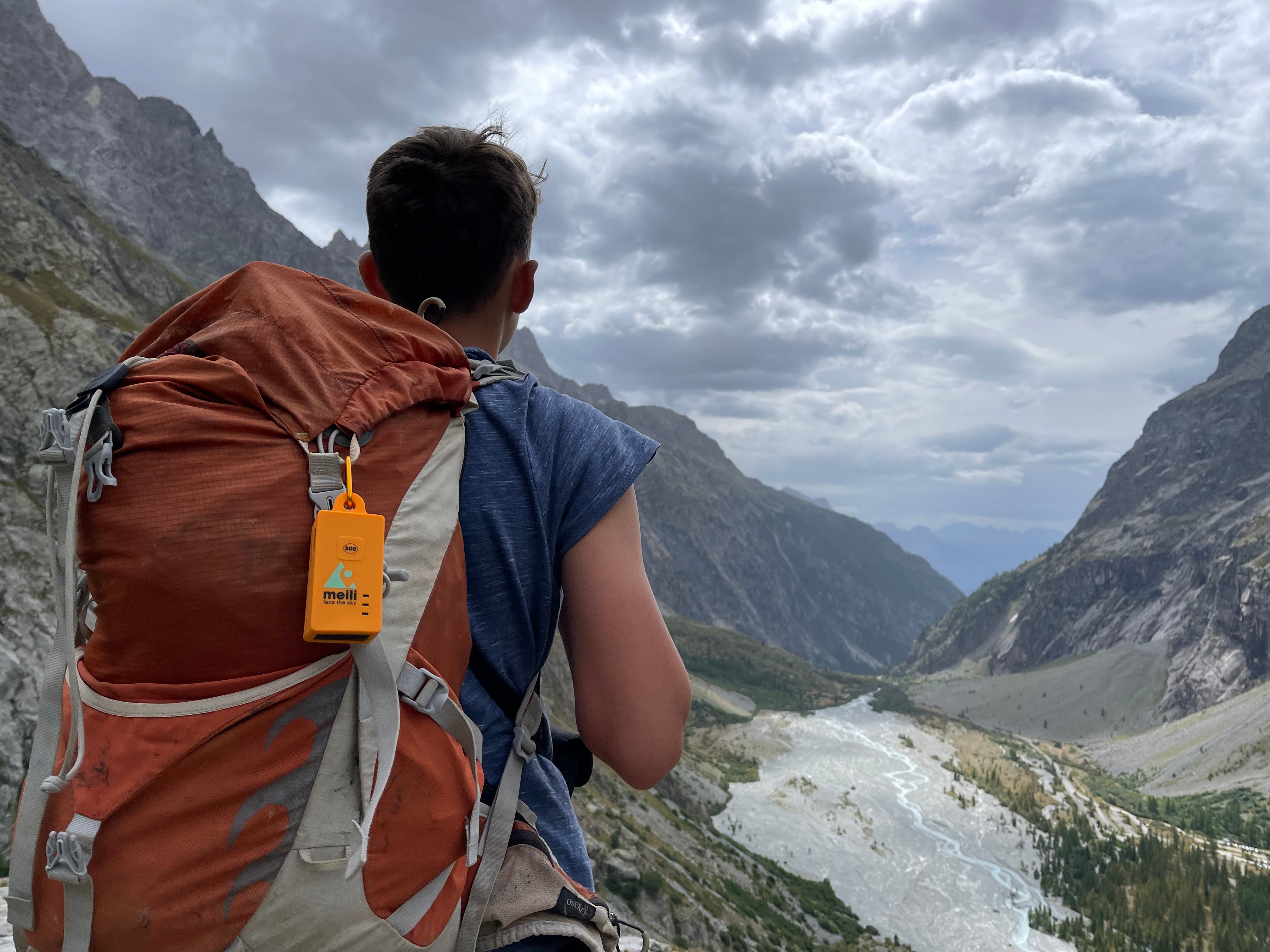Risk Assessments and GPS Trackers for Expeditions
Risk Assessments for Duke of Edinburgh Award Expeditions: The Essential Role of GPS Trackers
Legal Responsibilities of Expedition Organisers
Organisers of Duke of Edinburgh (DofE) Award Expeditions, Scouts, Cadets, and school trips in the United Kingdom are bound by stringent health and safety laws. The Health and Safety at Work Act 1974 imposes a duty of care on those responsible for supervising expeditions, ensuring that risks are effectively managed. Failure to uphold this duty can result in severe legal penalties, including prosecution under corporate manslaughter laws. The Health & Safety Executive states that Expedition Organisers need to ensure that the precautions proposed are proportionate to the risks involved. The employment of GPS Trackers to unsupervised children in an outdoor environment is an example of a proportionate precaution to mitigate the inherent risks. Staff planning, and managing, expeditions and trips should be properly supported by their employers. Equipping staff with the organisations' GPS Trackers and Tracker Monitoring software is an example of the support that employers should provide.
A stark reminder of the consequences of negligence is the tragic case of the Scouts expedition to Great Orme in Llandudno. A failure to adequately assess risks and ensure safety precautions led to a verdict of Unlawful Killing for the organisers. This case underscores the critical importance of thorough risk assessments and the implementation of robust safety measures, including the use of appropriate GPS trackers.
Choosing the Right GPS Tracker for Expeditions
To enhance safety and situational awareness, expedition organisers should select GPS trackers specifically designed for outdoor and expedition use. Not all GPS trackers are suitable; pet trackers, and AirTags, for example, are inadequate due to their reliance on proximity to personal devices (an AirTag must be within 100 metres of an Apple Device to function) and the potential privacy and safeguarding issues related to the use of GPS Trackers with under 18s and vulnerable persons (see point 4 below, Data Security & Access Control).
Essential Features of an Expedition-Ready GPS Tracking System:
-
Offline-Capable iOS and Android Apps
Expedition environments often have limited mobile signal. A web-based tracker interface is insufficient for mobile phone use as it becomes unusable when connectivity is lost. Instead, mobile-based GPS Tracker monitoring software should provide dedicated iOS and Android applications that function offline, ensuring continuous access to tracker locations if the phone user moves into connectivity blackspots. Organisers can mitigate against the risk of an organisers mobile losing signal by ensuring that all adult expedition assistant organisers (volunteers and helpers) also have the ability to tracker data via iOS or Android based GPS Tracker map and track apps (see point 4 below). In addition, it is recommended that expedition organisers equip the teams monitoring DofE and similiar expeditions with two-way VHF radios (walkie talkies), in the event that the organisers phone doesn't have a signal when they locate a group or individual in distress.Case Study: During an Oxfordshire School’s Bronze DofE Expedition in June 2024, teachers monitoring participants received an SOS alert from a Meili GPS Tracker assigned to one of the groups on the expedition. A teacher was assinged to mountain bike to the location of the alert, and she lost mobile signal en route whilst in dense woodland. However, because she was using the Meili Earth App, which continues to function offline with pre-downloaded 1:25,000 outdoor maps, and had stored the incident location offline also, she was able to navigate to the distressed group and summon medical assistance, thus averting a more serious incident. The teacher still had no mobile signal upon arrival at the incident but was able to communicate with the rest of the team via two way radio (walkie-talkie).
-
1:25,000 Scale Outdoor Maps
Expedition tracking requires detailed mapping, far beyond what generic services like Google or Apple Maps can offer. The GPS tracking software that schools and organisations employ should provide high-resolution, topographical maps that enable precise navigation in remote areas.Additionally, GPS Tracking software should offer versatile mapping capabilities to support diverse expedition needs, such as a UK based Bronze DofE trek, or an overseas school ski trip.
Case Study: Europa School in Oxfordshire invested in Meili GPS trackers initially to support Duke of Edinburgh expeditions. However, following an incident on an annual ski trip in which two students became lost, and distressed, the decision was made to deploy school GPS trackers on all school field trips. The Meili GPS Trackers and Meili Earth app used by the school include offline access to 1:25,000 outdoor maps, worldwide, and this enabled the school's 8 teachers to maintain detailed monitoring of 65 students in an Italian ski resort for 7 days, with the maps showing details such as chair lifts, runs, piste difficultly and topographical features such as rocky outcrops and cliffs, all of which would not have been visible on generic maps. -
Latitude, Longitude, and Grid Reference Reporting
The tracker must provide precise location data in both Latitude/Longitude and, when used in the UK, OS Grid references. This ensures that in the event of an emergency, first responders can be provided with coordinates in the most appropriate format for their navigation systems. -
Data Security and Access Control
Secure management of tracking data is essential. Expedition organisers must ensure that only authorised personnel have access to tracker locations. GPS Trackers assigned to under-18s provide location and route data, from a safeguarding perspective tracker data must be tightly controlled and audited. The GPS monitoring software employed should include role-based permissions, temporary access grants, data encryption, and the ability to anonymise tracking data when necessary.Example: The Meili Sharing Centre within the Meili Earth app provides robust permission controls, enabling expedition organisers to grant and revoke access to tracker data, ensuring that only those who need access have it, and only for as long as necessary.
-
Battery Life
GPS modules in modern electronic devices place a drain on the battery, leading to rapid battery depletion. Watches and Mobile phones fitted with GPS functionality typically have a battery life, when in GPS tracking mode, measured in hours. Cold climates further deplete batteries, particularly lithium-ion batteries, leading to the battery becoming flat sooner. The battery life of the GPS trackers that Expedition Organisers employ must be appropriate for the duration of the expedition, and the conditions in which the trackers will be used. For this reason, GPS trackers that run on AA batteries or watch-type batteries are generally not suitable for expeditions lasting more than 1 day. For expeditions and trips lasting several days or more, a GPS tracker with an internal, rechargeable lithium-ion battery capable of providing location tracking for 7 days or more will be required.
Conclusion
A thorough risk assessment is a legal and ethical necessity for any Duke of Edinburgh Award Expedition or similar outdoor activity. The selection of an appropriate GPS tracker plays a pivotal role in ensuring participant safety. Trackers must be purpose-built for expeditions, capable of operating offline, providing detailed mapping, supporting multiple coordinate systems, ensuring stringent data security and capable of operating for the duration of the expedition.
Expedition organisers must prioritise these features to ensure they meet legal obligations and protect the well-being of participants. The tragic example of the Great Orme Scouts expedition serves as a powerful reminder of the responsibility borne by those leading outdoor activities. By employing the correct GPS tracking technology, organisers can enhance safety, respond swiftly to emergencies, and ensure that their expeditions are conducted with the highest standards of risk management.



Comments